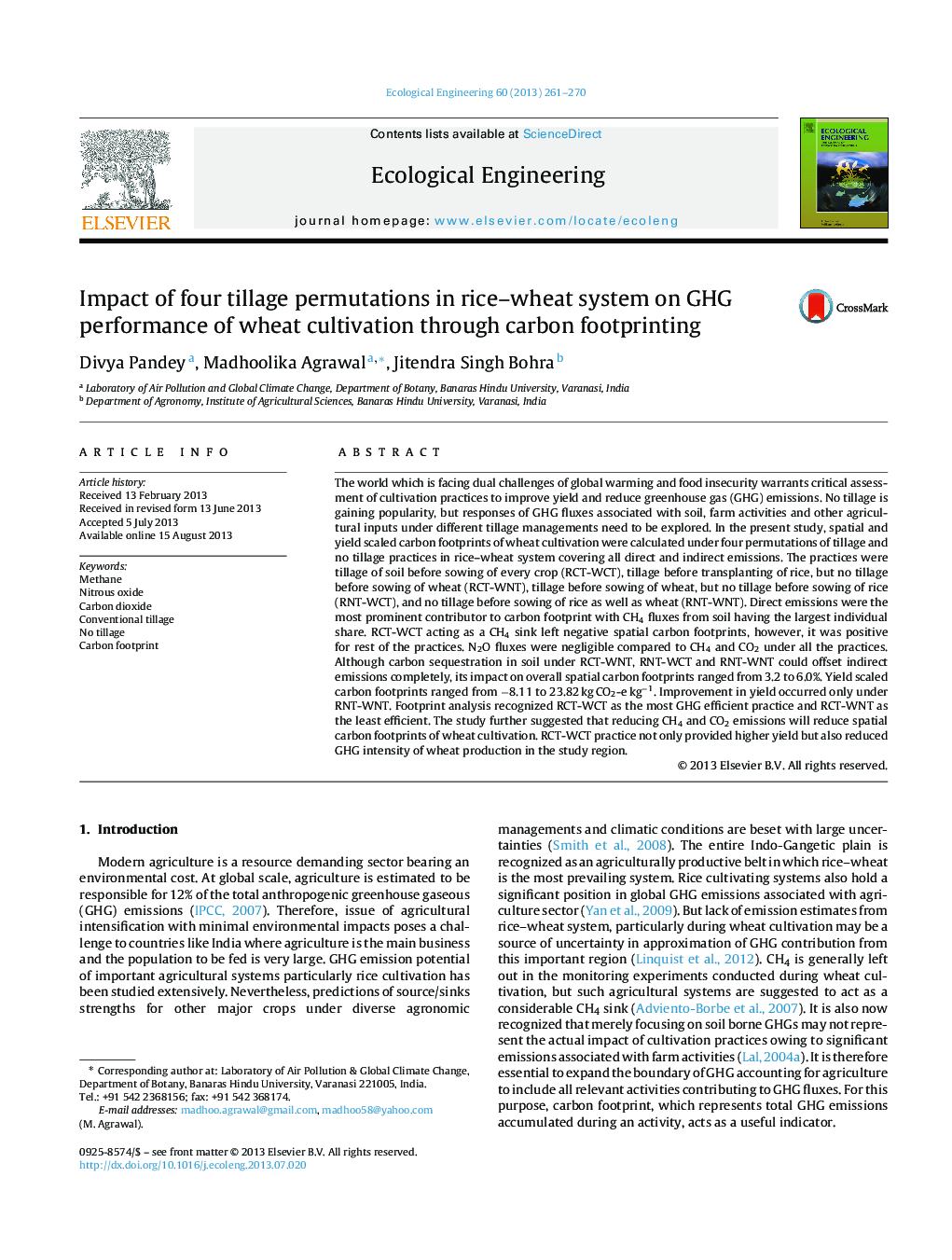| کد مقاله | کد نشریه | سال انتشار | مقاله انگلیسی | نسخه تمام متن |
|---|---|---|---|---|
| 6302407 | 1618038 | 2013 | 10 صفحه PDF | دانلود رایگان |
عنوان انگلیسی مقاله ISI
Impact of four tillage permutations in rice-wheat system on GHG performance of wheat cultivation through carbon footprinting
دانلود مقاله + سفارش ترجمه
دانلود مقاله ISI انگلیسی
رایگان برای ایرانیان
کلمات کلیدی
موضوعات مرتبط
علوم زیستی و بیوفناوری
علوم کشاورزی و بیولوژیک
بوم شناسی، تکامل، رفتار و سامانه شناسی
پیش نمایش صفحه اول مقاله

چکیده انگلیسی
The world which is facing dual challenges of global warming and food insecurity warrants critical assessment of cultivation practices to improve yield and reduce greenhouse gas (GHG) emissions. No tillage is gaining popularity, but responses of GHG fluxes associated with soil, farm activities and other agricultural inputs under different tillage managements need to be explored. In the present study, spatial and yield scaled carbon footprints of wheat cultivation were calculated under four permutations of tillage and no tillage practices in rice-wheat system covering all direct and indirect emissions. The practices were tillage of soil before sowing of every crop (RCT-WCT), tillage before transplanting of rice, but no tillage before sowing of wheat (RCT-WNT), tillage before sowing of wheat, but no tillage before sowing of rice (RNT-WCT), and no tillage before sowing of rice as well as wheat (RNT-WNT). Direct emissions were the most prominent contributor to carbon footprint with CH4 fluxes from soil having the largest individual share. RCT-WCT acting as a CH4 sink left negative spatial carbon footprints, however, it was positive for rest of the practices. N2O fluxes were negligible compared to CH4 and CO2 under all the practices. Although carbon sequestration in soil under RCT-WNT, RNT-WCT and RNT-WNT could offset indirect emissions completely, its impact on overall spatial carbon footprints ranged from 3.2 to 6.0%. Yield scaled carbon footprints ranged from â8.11 to 23.82 kg CO2-e kgâ1. Improvement in yield occurred only under RNT-WNT. Footprint analysis recognized RCT-WCT as the most GHG efficient practice and RCT-WNT as the least efficient. The study further suggested that reducing CH4 and CO2 emissions will reduce spatial carbon footprints of wheat cultivation. RCT-WCT practice not only provided higher yield but also reduced GHG intensity of wheat production in the study region.
ناشر
Database: Elsevier - ScienceDirect (ساینس دایرکت)
Journal: Ecological Engineering - Volume 60, November 2013, Pages 261-270
Journal: Ecological Engineering - Volume 60, November 2013, Pages 261-270
نویسندگان
Divya Pandey, Madhoolika Agrawal, Jitendra Singh Bohra,